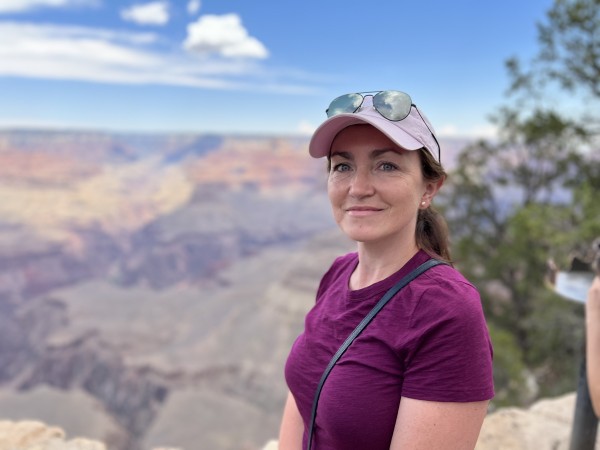This article is part of IPI’s series “Media Freedom in Europe in the Shadow of Covid”
Heraldo de Aragón is a regional daily newspaper in Spain founded 125 years ago and published in Zaragoza, in the country’s northeast Aragón province. It has the highest circulation in its distribution area. In 2011, it founded Hiberus, a technological company specializing in digital transformation to tackle the challenges posed by the digital disruption. In 2016, Heraldo de Aragón created Henneo, Spain’s seventh-largest communication group, which currently runs Heraldo de Aragón, Diario del Altoaragón, Radio Huesca, the free daily newspaper 20 Minutos, the monthly film magazine Cinemania, and La Información, a digital newspaper focusing on business and economic current affairs.
This article mainly focuses on the regional daily Heraldo de Aragón, Henneo’s largest news outlet. Its digital edition, Heraldo.es, caters mostly to readers of local and regional news – about 70 percent of the website traffic – but the paper’s aim is to offer a complete news product, including national news and an analysis of its regional impact. “What sets us apart is our focus on local and regional news, but there has always been, and will be, space for everything else”, Miguel Madrid, Henneo’s chief digital officer, told the International Press Institute (IPI).
Since the advent of digital news media, Heraldo de Aragón has fostered close collaboration with other small media outlets across Spain to be relevant in the highly competitive digital landscape. Betting on an advertising-oriented model, the network’s first project was a content recommendation engine, followed up by the introduction of local and regional advertising across all outlets. This experience led to the creation of a single sign-on (SSO) called LoVer (Local and Vertical), the foundation for a programmatic advertising system and paywall aimed at reducing costs and sharing experiences to sustain their journalism.
“By having people signed in on the same platform, we were able to easily segment users without depending on cookies, which will disappear in 2022”, Madrid said. In January 2020, they launched a new joint venture called Alayans, the culmination of the LoVer project. “For the past four or five years, we have been working on strengthening the technological side. We believe that the real value of our local media outlets is not volume, but loyal readers”, Madrid said. “We started to build a big data platform to collect information and generate tailored content to monetize our proposal.” This robust technological infrastructure has helped them weather the worst effects of the coronavirus pandemic, reaching out to a wider audience.
The members of Alayans consist of several news organizations with a total of 20 local newspapers. They share users, registrations strategies, content production – including multimedia content – and advertising management. “What the platform does is segmentation and user analysis. We share technology, staff, and other resources, and we also do benchmarking. If an email has worked for Heraldo, I share that experience with a local media outlet from Salamanca because we believe it may work there, too”, Madrid said.
Impact on journalism
But what impact does this platform have on journalism? “From a content point of view, and always referring to Heraldo.es, we use the data to guide our newsrooms in their day-to-day”, Madrid said. “We have changed how we present our data to our editors. Instead of volume, we focus on the content that is most interesting to the loyal readers of their sections. That generates a virtuous circle that allows us to identify what local content is the strongest. Considering that around 85 percent of our traffic is local, what works for us is anything close to our readers.”
This strategy has increased the time readers spend on the website and, most importantly, the number of times they return for more content. “Something beautiful that is happening now is that data is helping us reinforce local journalism and interconnect a growing number of local and regional media.”
Newsletters are also a valuable tool. “Readers like them because they use a specific journalistic language and a different headline. We are generating different areas of interest”, Madrid explained. Heraldo.es is currently sending 12 newsletters on Covid-19, tourism, and gastronomy, among other topics. “We have an average opening ratio of 45 to 50 percent, which is high for a newsletter. I think that is because they are written by journalists”, Madrid said.
Surveys are the outlet’s favourite tool to communicate with readers and to provide relevant content through newsletters. “We have about 4,000 users who systematically answer these surveys and suggest improvements”, Madrid explained. “They also allow us to know where we are doing well and where we are doing badly.”
The future
Heraldo.es expects to set up a paywall early next year. “The idea is to use big data to find out what content readers are loyal to and put that content behind a paywall”, Madrid told IPI. “The subscription model is closely linked to content, and we believe that what we do is valuable and that it should be paid for. On the other hand, we also want to be relevant in our community, so we are now thinking in terms of different audiences, of sections and subsections. We know the kind of content those audiences are interested in; we know how to create that content and how to deliver it.”
Heraldo.es plans to set up a customized paywall, enabled by its in-house technological platform, which is currently being used by 11 media outlets. “This technology allows us to choose any paywall model that we want”, Madrid said. “We think it’s important to combine metered paywalls and paid content and go freemium. At any rate, a paywall is an intelligent tool associated to our users and their interests, and our system helps us to differentiate and create a customized paywall for each user”.
Heraldo.es has also employed other strategies to monetize its news products. For two years, the newspaper has published a series focusing on depopulation in rural areas in Aragón. Late last year, this series received the Ortega y Gasset Journalism Award given by the newspaper El País. “We gathered it all together in book format and sent a newsletter to people who had read this content”, Madrid recounted. “We have sold out the 600 copies that we printed.” Also, Heraldo.es runs the HClub, which includes subscription bundles, promotions, and a shop selling a wide range of products, from books to custom jewellery, all of them linked to Heraldo de Aragón.
During the pandemic, the newspaper took part in a furlough scheme, hampering its efforts to cover all the news. However, the paper’s loyal readership – readers who visit the page over 20 times a month – has almost doubled since the outbreak of the pandemic, going from 250,000 to 450,000. “That confirms that readers come to local and regional media outlets for relevant information”, Madrid concluded.
- Click here to read more from IPI’s new reporting series Media Freedom in Europe in the Shadow of Covid




